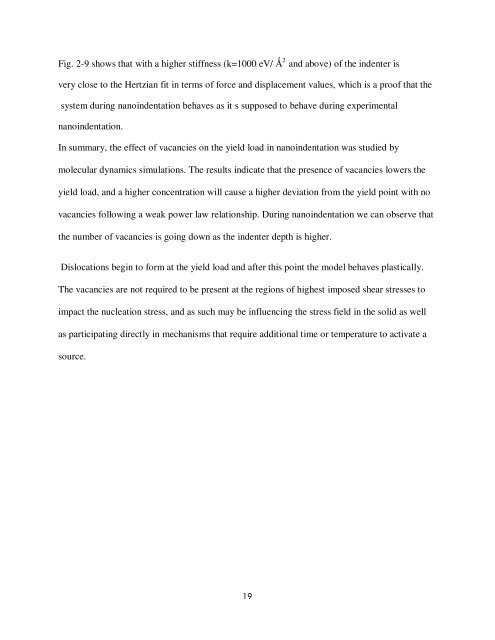DEFECTS IN METALS AND SIMULATION OF MECHANICAL ...
DEFECTS IN METALS AND SIMULATION OF MECHANICAL ...
DEFECTS IN METALS AND SIMULATION OF MECHANICAL ...
You also want an ePaper? Increase the reach of your titles
YUMPU automatically turns print PDFs into web optimized ePapers that Google loves.
Fig. 2-9 shows that with a higher stiffness (k=1000 eV/ Ǻ 2 and above) of the indenter is<br />
very close to the Hertzian fit in terms of force and displacement values, which is a proof that the<br />
system during nanoindentation behaves as it s supposed to behave during experimental<br />
nanoindentation.<br />
In summary, the effect of vacancies on the yield load in nanoindentation was studied by<br />
molecular dynamics simulations. The results indicate that the presence of vacancies lowers the<br />
yield load, and a higher concentration will cause a higher deviation from the yield point with no<br />
vacancies following a weak power law relationship. During nanoindentation we can observe that<br />
the number of vacancies is going down as the indenter depth is higher.<br />
Dislocations begin to form at the yield load and after this point the model behaves plastically.<br />
The vacancies are not required to be present at the regions of highest imposed shear stresses to<br />
impact the nucleation stress, and as such may be influencing the stress field in the solid as well<br />
as participating directly in mechanisms that require additional time or temperature to activate a<br />
source.<br />
19

















